After several decades of silence, an ancient printing press with hieroglyphs unique in Egypt has come back to life in the heart of the French Institute of Oriental Archeology (IFAO), in Cairo. A workshop visited by Sciences et Avenir.

The last plate used in 1990 by the former IFAO printing house, Cairo, for the last book published with the lead hieroglyphics technique.
In the old quarter of Qasr al-Ainy, in Cairo, the majestic premises of the French Institute of Oriental Archeology (IFAO), which a small facelift is in the process of refreshing, conceal a real treasure. It is neither mummy nor sarcophagus, as the vocation of the venerable building dedicated to the study of Egyptian civilization might suggest, but a typographical workshop installed for 113 years in a building belonging to the industrial architecture from the very beginning of the 20 e century. A precious place where old machines have started to produce one by one lead characters stamped with hieroglyphic signs. The premises had been transformed into a museum for decades for the benefit of the adjoining modern printing press, which is masterfully run by the very energetic Mathieu Gousse, head of the Institute's publishing department. But the old workshop hidden at the bottom of the garden of the Mounira Palace has recently resumed service.
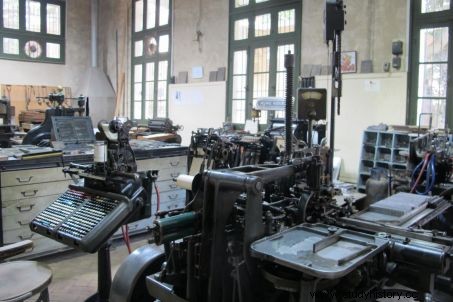
The former IFAO printing press in its original state. © Bernadette Arnaud / Science and Future
"She is one of only three survivors of this type in the world"
As soon as you enter, you are struck by the hubbub of the mechanisms in action whose multiple steel arms, like locomotive pistons, knit typographic characters in rhythm. Alongside a Monotype machine which melts Latin, Greek or Arabic characters from lead ingots, the Foucher is activated, the only one to produce Egyptian hieroglyphs. "She is one of only three such survivors in the world, the other two are in the United States and Germany" , explains in the midst of the din the young Parisian publisher, who made a career at Gallimard, Flammarion and Armand Colin before choosing Egypt eight years ago. Immediately seduced by this heritage treasure integrated into the IFAO Research Institute, he found himself there "as in a dream" .
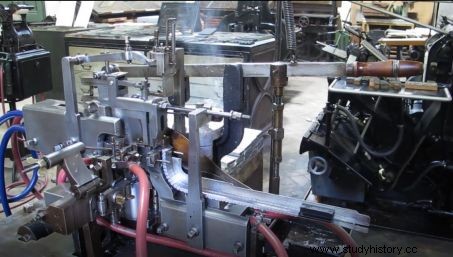
The Foucher machine, in the process of producing hieroglyphic typefaces. © Bernadette Arnaud / Science and Future
A few matrices and punches of hieroglyphic characters that the Egyptologist Emile Chassinat (1868-1948), one of the first directors of the IFAO, had helped to draw in his time, rest on workbenches. "Only two specialists from the Cabinet des Poinçons de l'Imprimerie Nationale in Paris today possess such expertise" , whispers Mathieu Gousse as he passes. Classified on large shelves, fonts in Arabic, Greek, Latin and hieroglyphic characters classified in cases, constitute this unique collection. "In 1880, when the French Institute of Oriental Archeology was born, very quickly the creation of a hieroglyphic printing press was essential because the researchers of the time needed to publish the statements of all the Ptolemaic temples that they had studied" , explains Mathieu Gousse.
The first mission of the printing house was thus in 1902 to buy the Foucher machine to manufacture these fonts, which was the subject of the first edition of the Catalogue of the hieroglyphic font of the Imprimerie de l' IFAO , in 1907. At the time, 3509 hieroglyphic characters were listed, classified by themes (plants, reptiles, birds, mammals, etc.), then they will be 7000, in 1983. Today, with computers, Egyptologists use a word processor called JSech , which lists 12,000 hieroglyphic characters. "You should know that at the beginning of the 20 e century, it took between five and seven years to publish a book that contained hieroglyphics!" , recalls Mathieu Gousse.
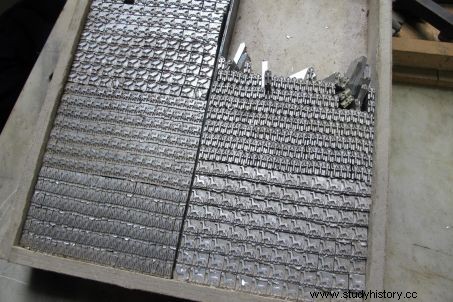
Lead fonts of hieroglyphic characters. © Bernadette Arnaud / Science and Future
Printing has gone through two technological revolutions
The printing press has indeed gone through two technological revolutions:the transition from lead printing to offset printing in 1990, and to digital printing in 2011, the core business of the current modern IFAO printing press. .
The restarting of this long dormant workshop is the work of one of the former operators of the printing press, from which Hany Mouawad, a young Egyptian mechanic, has since taken up the torch. "The point of restarting these machines and transforming what had become a museum into a typographic workshop is to bring in contemporary graphic designers and calligraphers" , explains Mathieu Gousse.
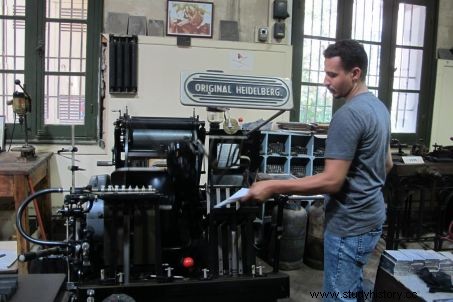 Hany Mouawad, the young Egyptian mechanic who took over and now runs the ancient printing press of the IFAO. © Bernadette Arnaud / Science and Future
Hany Mouawad, the young Egyptian mechanic who took over and now runs the ancient printing press of the IFAO. © Bernadette Arnaud / Science and Future
"Our ambition is to welcome artists in residence wishing to use these exceptional machines for the production of their works. We did this recently with young Egyptian poets, who usually publish on Facebook It's a way to make the connection between the social networks of the 21 e century and late 19 th letterpress printing techniques century ! And 2022, the year of the bicentenary of Champollion could be a good time to make this space known" , enthuses Mathieu Gousse.
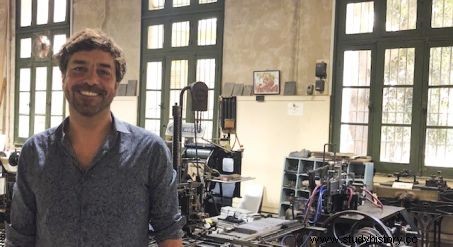
Mathieu Gousse, head of the publishing division of the French Institute of Oriental Archaeology, in the workshop of the former IFAO printing press. © MG
Regarding paper, Egypt - country of papyrus - does not have trees and does not produce paper pulp. However, in Cairo as in Damascus (Syria), there is a very great tradition of publishing and printing and major purchasing centers making it possible to find all the qualities of paper in the world. Mathieu Gousse, who has no shortage of projects, hopes that French printing museums such as Nantes or Lyon will discover this real industrial and heritage treasure that is the former typographic workshop of the IFAO in Cairo. "And why not have this printing press placed on UNESCO's list of intangible heritage?" , he likes to dream. Classifying this high place would indeed be a tribute paid to the know-how of all the workers who for more than a century have made it possible, thanks to the use of these machines and the casting of hieroglyphic characters, to the publication of so many archaeological treasures that have made the world dream.
